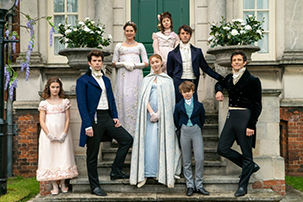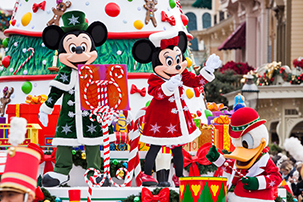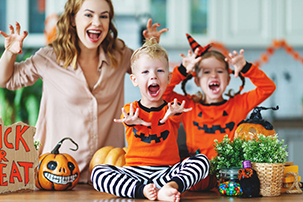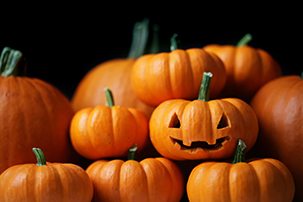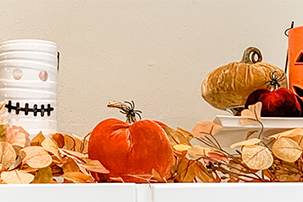Ever wonder how wrapping paper is made? From the rolls of colorful strips to shiny metallic sheets, you find yourself asking, “How does it get from paper mill to my gift wrap drawer?” Well wonder no more! Today we’ll explore the process of making wrapping paper and learn just how this festive material makes its way from factory floor to your celebrations.
Introduction
Wrapping paper is a thin sheet of paper used to cover or wrap an item. This sheet of paper can be printed, glossed with plastic coatings, patterned, and embossed to provide a decorative touch to the wrapped item. It is typically used for items such as presents, gifts and other products that need protection during transit or storage.
The production of wrapping paper involves several steps which all work together to form the desired product. The materials and processes needed to produce wrapping paper vary depending on the desired thickness and formatting of the paper as well as any specialized finishes being applied, but generally involve Pulping, Sizing, Coating and Folding/Packing stages. In this guide we will discuss and explore each stage in detail so that you can understand how wrapping paper is made from start to finish:
- Pulping
- Sizing
- Coating
- Folding/Packing
Materials Used in the Making of Wrapping Paper
Wrapping paper is an essential part of many gift-giving occasions. It brightens the present and makes it look even more attractive to the recipient. Despite its importance, most people don’t know what material goes into making wrapping paper. Here are some of the most common materials used in making wrapping paper:
- Wood pulp: Wood pulp, also known as cellulose, is one of the most common materials used in producing wrapping paper. It can be obtained from wood processing plants or specially prepared wood chips that have been processed and treated with chemicals to increase its thickness and strength.
- Recycled or reclaimed paper: Reused or recycled paper fibers are also popularly used as a sustainable option for making wrapping paper. It may include anything from old magazines or books to cardboard or newspaper, depending on what the manufacturer has available.
- Metallic sheets: Metallic sheets like aluminum foil, mylar film, or chromium can be placed between wood pulp layers to add a glossy sheen that makes the colors pop. Metallic substrates may also contain recycled materials such as aluminum cans that have been shredded and melted down for reuse.
- Polypropylene: Polypropylene is a lightweight plastic film that is often used as an overlay on top of other materials in order to create a glossy finish and help keep colors vibrant for longer periods of time.
Manufacturing Process of Wrapping Paper
Wrapping paper is created through several steps including jumbo rolls, winding and slitting, printing and producing, cutting and rewinding. The process of manufacturing wrapping paper requires careful attention to detail in order to achieve the desired result.
- Jumbo Rolls: Jumbo rolls are pre-printed large rolls of paper that come in a variety of sizes and weights. They can be produced from Virgin Pulp Grade Kraft, Sulfite or recycled papers with an assortment of finishes including embossing or matte.
- Winding and Slitting: Once the jumbo rolls arrive, they are wound onto large spindles by a rewinder machine where they will await processing. This process also involves slitting the material into strips which enable it to be cut further down into standard wrappable sizes.
- Printing and Producing: During this stage printing machines inks jet onto the substrate creating different varieties such as single-color solid design for matte sheets or more complex designs for shinier ones with more vibrant colors that can include gold flakes or other special effects.
- Cutting & Rewinding: After the printing has been completed, a guillotine cutter is used to cut through all layers at one time – producing exact size sheets – variable length lengths are achieved by manipulating this cutter accordingly. This is then followed by rewinding them into starter cores ready for packaging operations.
- Packaging: After being printed and die-cut, wrapping paper is converted into wrapsheets (sheets wrapped around cores) so they are ready for use by consumers. The wrapsheet packaging includes either cellophane or polypropylene held by a tension band on their corners – allowing them to be neatly stacked while awaiting distribution.
Different Types of Wrapping Paper
Wrapping paper is sold in a variety of shapes, sizes, colors, and textures. Depending on the type of paper used, different methods of production are utilized. The following summarizes the most common types of wrapping paper:
- Ribbed Paper: Ribbing marks are added to kraft or plain wrapping paper to create additional texture and detail to their surface. This is done by adding grooved rollers during the manufacturing process that leave behind ribbed designs once dry.
- Foil Wrapping Paper: This type of wrapping paper is created by coating specialized paper with an aluminum foil pigment or film in order to obtain a reflective or metallic finish. This can be done through various methods such as waxing or varnishing for a shiny effect, pressing in molds for embossed designs, or simply laminating.
- Glitter Wrapping Paper: To create this sparkly product, manufacturers often adhere sparkling glitter pieces to ordinary kraft paper or incorporate it into the material itself so it has a uniform shimmery finish. They may also have kraft foil – which blends both foil and glitter together-or colored glitter finishes that alter its glimmering appearance depending on where and how light hits it.
- Bubble Wrapping Paper: Bubble wrap is produced by squeezing foam balls in between two specialized wrapping papers consisting of low/medium density plastic films. Once laminated together they stay adhered until one applies pressure which then causes small gaps forming between each bubble layer allowing air to pass through them thus making them burstable when pushed against an object surface which results in those satisfying noises people usually associate bubble wrap with!
Benefits of Using Wrapping Paper
Wrapping paper offers a variety of benefits to both the giver and the receiver when used for gift wrapping. Using wrapping paper eliminates the need for standard gift bags or plain boxes, making it an ideal choice for customizing gifts for any occasion. With so many different designs, sizes and materials available, it’s easy to create an eye-catching package that will leave a lasting impression.
Aesthetically speaking, wrapping paper allows recipients to enjoy an attractive presentation even before they open their gifts. It can be purchased in a variety of different patterns that are usually reflective of the occasion or season being celebrated. With such a wide selection, there is sure to be something that everyone can appreciate.
Utilizing wrapping paper is also more economical than using printed boxes or specialty bags – making it a great option for those on a budget. Its easy-to-use design allows users to quickly wrap and decorate presents without spending time in design and preparation stages, allowing everyone more time to celebrate with friends and family. Additionally, wrapping paper can often be re-used if it isn’t damaged too much during the opening process; this also makes it more eco-friendly than some other options!
Environmental Impact of Wrapping Paper
Wrapping paper is traditionally made from regular paper that is often bleached white, colored, and then printed with designs. The majority of wrapping paper contain no tree fiber at all and are created entirely from virgin wood pulp. As a result, its production has significant environmental impacts such as deforestation, air pollution from the bleaching process and water pollution from the mining process used to obtain the raw material for paper production.
In addition to these processes when making traditional wrapping paper, energy is consumed during the cutting, gluing and folding of the product; this energy use can also have an environmental impact on natural resources like water or air.
The use of non-recycled materials to create wrapping paper has detrimental effects on our environment; as well as reducing waste by recycling existing materials instead of cutting down more trees to make more new materials. Recycled wrappings papers take fewer resources to produce than their virgin versions because they do not require bleaching or additional dying processes that traditional wrapping papers need. Also, less energy is used in creating them since there are no extra processes (such as folding) involved in their production and they come pre- folded instead. Finally, they don’t contribute as much carbon dioxide into the atmosphere since most of them are made with post-consumer recycled content – meaning it was already in use before being re-purposed into wrapping paper!
Tips for Choosing the Right Wrapping Paper
Choosing the right wrapping paper for a gift is as much an art as it is a science. Factors such as occasion, giver, and recipient should all be taken into consideration. Here are some tips to help you find the perfect wrapping paper for your next gift:
- Consider the occasion and theme – When deciding which wrapping paper to use, take the occasion into account. You may want to go with a festive pattern or colors if it’s for a birthday or holiday, whereas if it’s for an anniversary or engagement you may want something more muted and romantic. For special events like weddings or graduations, picking out wrapping paper with their school colors or initials on it is always a nice touch.
- Think about who will receive the gift – Knowing who will receive the gift can also help guide your choice in wrapping paper; select something they’ll love but still suits the event they’ll be receiving it at. If it’s someone close to you like your best friend or a family member then picking something personalized or with their favorite color might be best!
- Consider budget and quality – As with any product you purchase, quality matters when choosing wrapping paper, so make sure that you don’t just choose something because of its design but check that it actually has good durability and will last in storage until gifting day arrives! Some brands offer more luxurious papers at higher prices – these have usually been made from recycled materials and provide extra protection against tearing during transport of your gifts!
- Choose an appropriate size – Wrapping papers come in all different sizes so make sure to choose wisely – too small and you won’t be able to wrap around enough of your gift; too big and there would be lots of unnecessary waste! Most standard stores such as Walmart carry various sizes of papers from small 8 inch papers up to large jumbo rolls so match up exactly what works best for each individual item to avoid overspending on excessive packaging materials elsewhere!
Conclusion
In conclusion, wrapping paper is made of paper pulp combined with dye, chemicals and prints. The materials are mixed together and rolled out into thin sheets that are used to make the wrapping paper we see today. It is a process that has many variables, including the thickness of the paper and the type of dye and print used, which affects how long-lasting the paper will be.
Knowing how wrapping paper is made can help you choose the perfect product for your needs.

